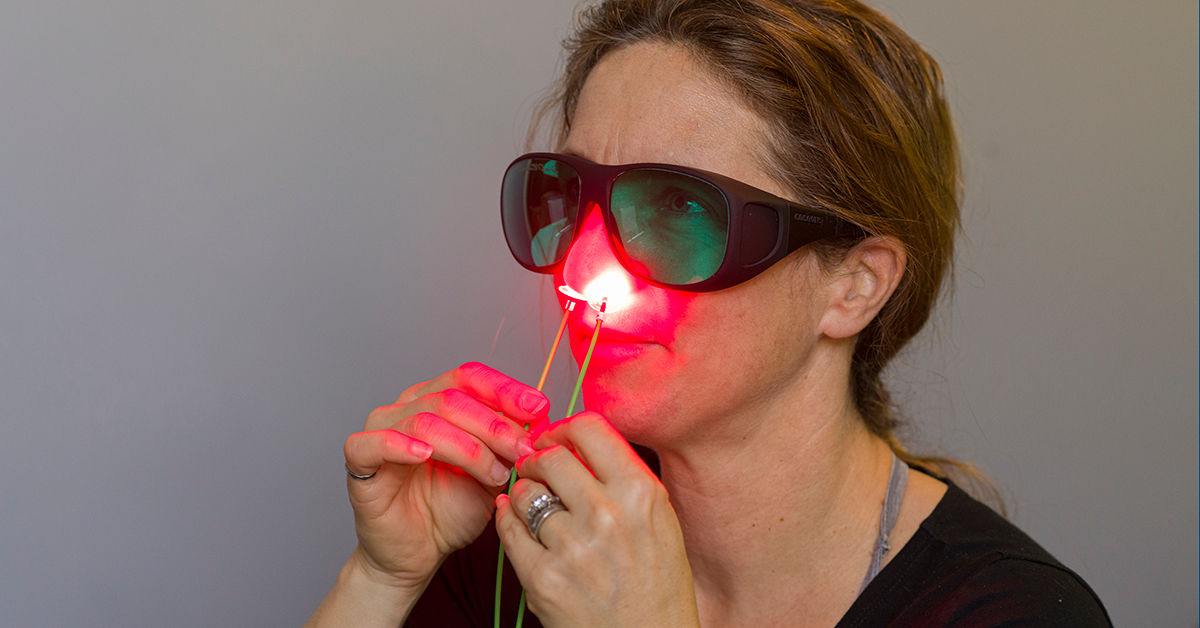Can light therapy be used to treat early stages of COVID-19?
A team of researchers from Sunnybrook Research Institute and University Health Network is investigating whether a form of light therapy, commonly used to eliminate harmful bacteria from surgical patients, can also be used to destroy COVID-19.
“Methylene blue photodisinfection (PDT) is a highly effective and safe treatment that uses the local application of a non-toxic dye, activated by light, to destroy harmful bacteria and viruses,” says Dr. Cari Whyne, one of the principal investigators of the study and research director of the Holland Bone and Joint Research Program at Sunnybrook Research Institute. “PDT is safe, low-cost and minimally invasive, making it an exciting option to potentially reduce the spread of SARS-CoV-2, the virus that causes COVID-19.”
The trial, funded in part by the Government of Ontario's COVID-19 Rapid Research Fund, is aiming to evaluate the potential of the light therapy in people who have recently tested positive for COVID-19. The research team is working with Canadian company, Ondine Biomedical, who developed the Steriwave™ photodisinfection technology used in the study.
During a study visit, participants have the inside of the front part of their nose swabbed for a baseline measure of virus particles present. The treatment is performed by applying the methylene blue photosensitizer to the inside of the nostrils and placing a light source for a few minutes. Following this, a second swab of the nose is taken to measure how effectively the light therapy has inactivated the virus.
“There’s still so much to know about coronavirus, so why not help learn more by participating in a safe research study? I just want to help defeat this pandemic,” said one participant in the study.
In addition to quantifying the amount of virus particles present after photodisinfection, the researchers have also been conducting pre-clinical research to establish the best amounts of photosensitizer and light doses necessary to kill SARS-CoV-2.
Although the study is still in its early stages, the research team sees possible implications for the light therapy, if it proves successful. “We’re excited about the potential of photodisinfection from a few standpoints — preventatively for people visiting a high-risk area or for those who have recently been exposed or are at an early stage of infection,” says Dr. Brian Wilson, co-principal investigator of the study and a senior scientist at University Health Network, Toronto.
The study team is urgently recruiting anyone recently diagnosed with COVID-19, symptomatic or asymptomatic, to participate in the study. To learn more, visit their study page or email orthores@sunnybrook.ca.
Media Contact:
Samantha Sexton
Communications Advisor
samantha.sexton@sunnybrook.ca








